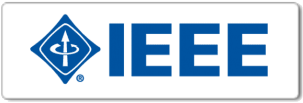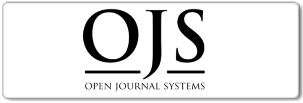IMPLEMENTATION OF GENERATIVE ADVERSARIAL NETWORKS FOR CREATING DIGITAL ARTWORK IN THE FORM OF ABSTRACT IMAGES
DOI:
https://doi.org/10.20884/1.jutif.2022.3.3.262Keywords:
abstract image, Generative Adversarial Networks, GANs, Generator, DiscriminatorAbstract
Abstract painting always has its own place for the fans, the irregular shape in it, and the emotions depicted in the painting, make many people amazed to see it. The success of this abstract image sparked the idea of being able to create an abstract image using Deep Learning Technology. Generative Adversarial Networks (GANs) is one of the Deep Learning technologies that can create it. With the GANs method which has Generator and Discriminator functions in it, it is possible for someone to be able to create it. The generator functions to generate new data through training the data(train), and the Discriminator functions to determine whether the new data is fake or not data through training (train) comparing the generator results with the original data. These two functions are used to create abstract images. Abstract images were obtained through training in 1369 paintings of nature, landscapes, and flowers. The images are trained by comparing the number of epochs used and the results of the abstract images generated from each epoch. The epoch will be divided into three parts, namely the first training using 10 epochs, the second training using 100 epochs, and the third training using 1000 epochs. In this journal, we will compare the results of the three trainings and reach a conclusion which training produces the best abstract image according to the author. From the training, 1000 epoch training was obtained which produces good abstract images.
Downloads
References
D. Noventin Maghdalena, Y. Puspita, D. Pendidikan Seni Rupa, and F. Pendidikan Seni dan Desain, “Analisis Estetik Karya Seni Lukis Moel Soenarko yang Bertema Heritage,” ejournal.upi.edu, vol. 1, no. 2, pp. 1–14, 2019.
S. DAN WACANA Amir Gozali Jurusan Seni Rupa Murni and F. Seni Rupa dan Desain, “DIMENSI SPIRITUAL DALAM SENI LUKIS ABSTRAK KONTEMPORER INDONESIA,” Acintya Jurnal Penelitian Seni Budaya, vol. 11, no. 1, pp. 1–11, 2019, doi: 10.33153/acy.v11i1.2609.
C. Ledig et al., “Photo-Realistic Single Image Super-Resolution Using a Generative Adversarial Network,” arxiv, vol. 5, no. 1, pp. 1–5, 2017, doi: 10.48550/arXiv.1609.04802.
X. Liang, H. Zhang, and E. P. Xing, “Generative Semantic Manipulation with Contrasting GAN,” arxiv, vol. 1, pp. 1–12, 2017, doi: 10.48550/arXiv.1708.00315.
J. D. Curtó, I. C. Zarza, F. Torre, I. King, and M. R. Lyu, “High-resolution Deep Convolutional Generative Adversarial Networks,” arxiv, vol. 18, pp. 1–8, 2020, doi: 10.48550/arXiv.1711.06491.
X. Yi, E. Walia, and P. Babyn, “Generative Adversarial Network in Medical Imaging: A Review,” Medical Image Analysis, vol. 58, pp. 1–22, 2019, doi: 10.1016/j.media.2019.101552.
W. Hu and Y. Tan, “Generating Adversarial Malware Examples for Black-Box Attacks Based on GAN,” arxiv, vol. 1, pp. 1–6, 2017, doi: 10.48550/arXiv.1702.05983.
I. J. Goodfellow et al., “Generative Adversarial Nets,” NIPS, vol. v1, pp. 1–8, 2014, doi: 10.48550/arXiv.1406.2661.
D. Volkhonskiy, B. Borisenko, and E. Burnaev, “GENERATIVE ADVERSARIAL NETWORKS FOR IMAGE STEGANOGRAPHY,” ICLR 2017 conference submission, pp. 1–7, 2016.
H. Fonda, Y. Irawan, A. Febriani, S. Informatika, and H. T. Pekanbaru, “KLASIFIKASI BATIK RIAU DENGAN MENGGUNAKAN CONVOLUTIONAL NEURAL NETWORKS (CNN),” JIK, vol. 9, no. 1, pp. 1–10, 2020, doi: 10.33060/JIK/2020/Vol9.Iss1.144.
A. T. Putra, K. Usman, and S. Saidah, “WEBINAR STUDENT PRESENCE SYSTEM BASED ON REGIONAL CONVOLUTIONAL NEURAL NETWORK USING FACE RECOGNITION,” Jurnal Teknik Informatika (Jutif), vol. 2, no. 2, pp. 109–118, Mar. 2021, doi: 10.20884/1.jutif.2021.2.2.82.
T. Henighan and S. Physics, “Spatial Control in Neural Style Transfer,” CS231N, pp. 1–6, 2017.
L. Metz, B. Poole, D. Pfau, and J. Sohl-Dickstein, “Unrolled Generative Adversarial Networks,” ICLR, vol. 4, pp. 1–25, Nov. 2016, doi: 10.48550/arXiv.1611.02163.
A. Creswell, T. White, V. Dumoulin, K. Arulkumaran, B. Sengupta, and A. A. Bharath, “Generative Adversarial Networks: An Overview,” Institute of Electrical and Electronics Engineers (IEEE), vol. 1, pp. 1–7, Oct. 2017, doi: 10.1109/MSP.2017.2765202.
A. Radford, L. Metz, and S. Chintala, “Unsupervised Representation Learning with Deep Convolutional Generative Adversarial Networks,” arXiv, vol. 2, pp. 1–4, Nov. 2015, doi: 10.48550/ARXIV.1511.06434.
S. K. Venu and S. Ravula, “Evaluation of deep convolutional generative adversarial networks for data augmentation of chest x-ray images,” Future Internet, vol. 13, no. 1, pp. 1–13, Jan. 2020, doi: 10.3390/fi13010008.
T. Salimans, I. Goodfellow, W. Zaremba, V. Cheung, A. Radford, and X. Chen, “Improved Techniques for Training GANs,” arXiv, vol. 1, pp. 1–8, Jun. 2016, doi: 10.48550/ARXIV.1606.03498.
S. Murni and P. S. Rupa, “DISTORSI DISLEKSIA MELALUI LUKISAN ABSTRAK DENGAN REALITAS BERIMBUH (AR) Anjani Imania Citra Afsiser,” Ikonik jurnal seni dan Desain, vol. 3, no. 2, pp. 14–18, 2021, doi: 10.51804/ijsd.v3i2.993.
S. Sen and K. Sawant, “Face mask detection for covid_19 pandemic using pytorch in deep learning,” IOP Conference Series: Materials Science and Engineering, vol. 1070, no. 1, pp. 1–5, 2021, doi: 10.1088/1757-899X/1070/1/012061.



























